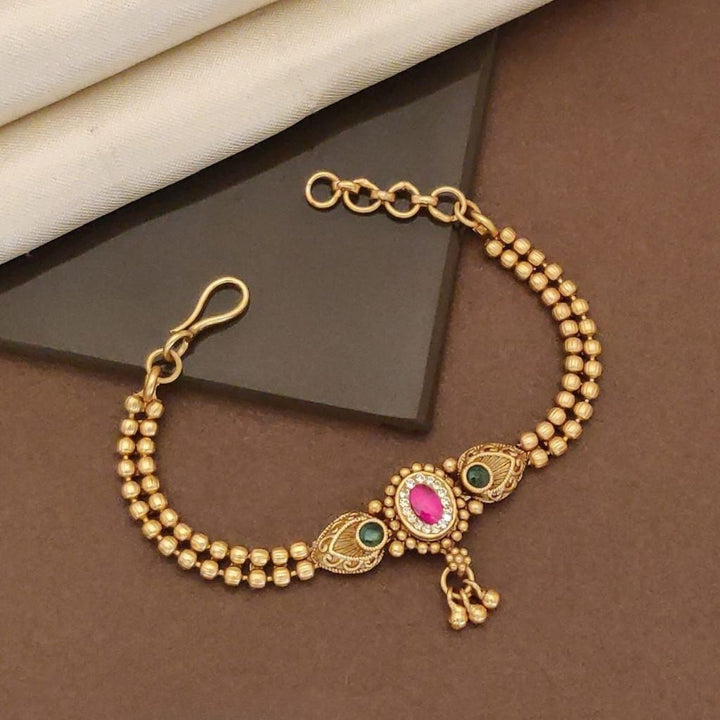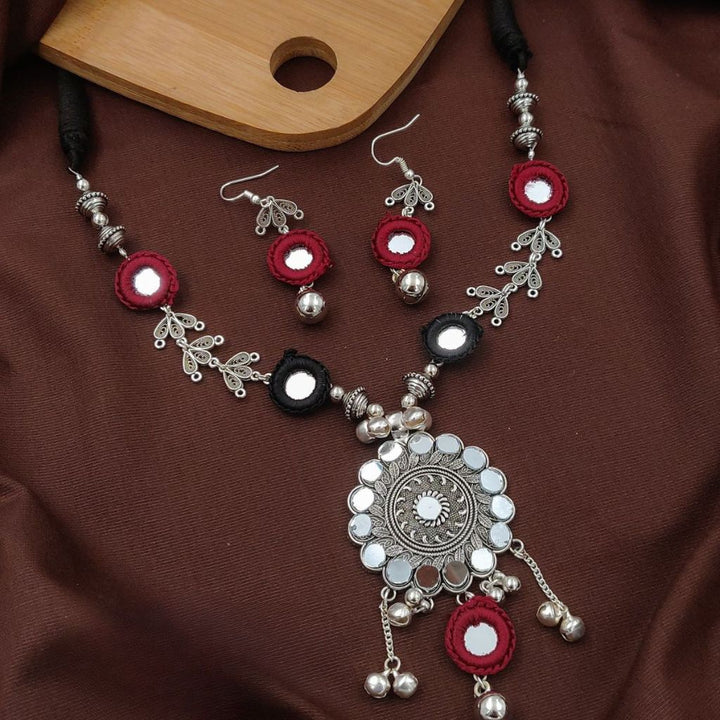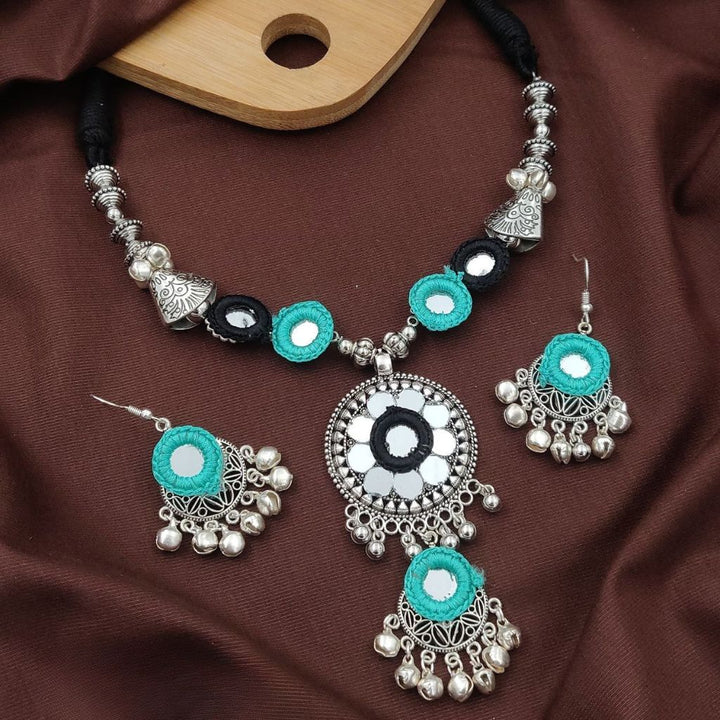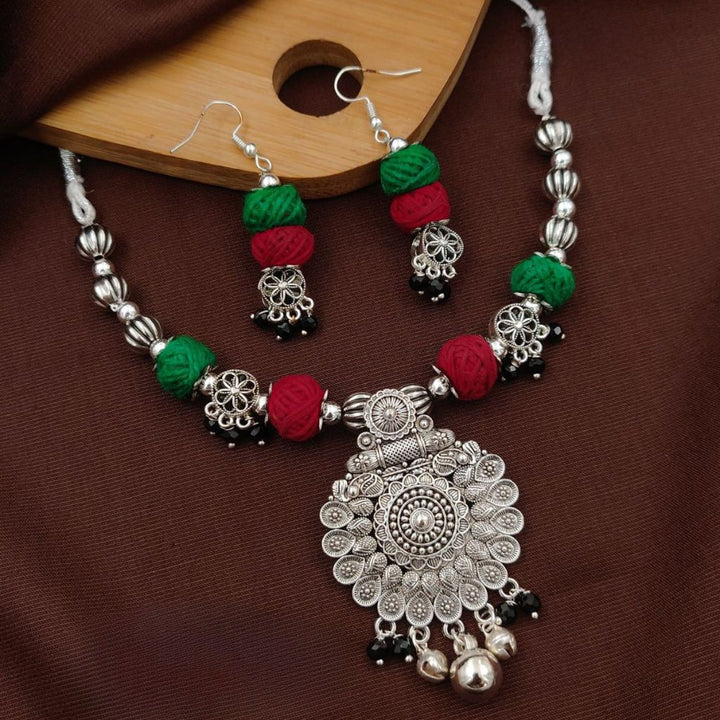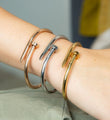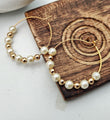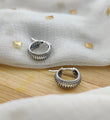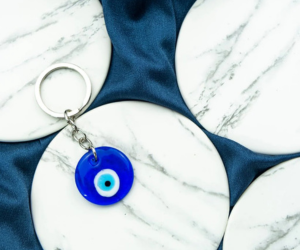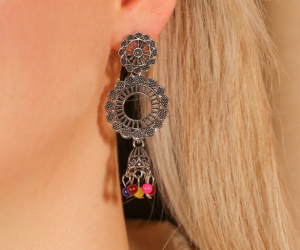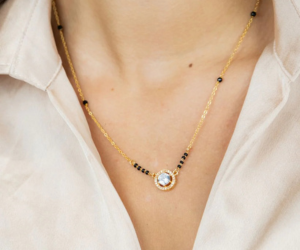If you’ve ever looked at a fashion influencer’s Instagram post and wondered how they manage to wear five necklaces without looking cluttered, you’re not alone. Layering necklaces has become one of the most popular ways to elevate any outfit—whether it’s a casual tee or a sleek evening dress.
But let’s be real: It can feel intimidating to start. Too many chains and pendants might make you look more like a tangled mess than a style icon. That’s why knowing how to layer necklaces properly is essential.
In this comprehensive necklace layering guide, we’ll walk you through everything you need to know—from choosing the right lengths and materials to mixing metals and adding meaningful pieces that reflect your personality.
By the end of this article, you’ll have all the tools and confidence you need to build your own signature stacked look.
Chapter 1: Understanding the Basics of Necklace Layering
Before diving into advanced styling techniques, it’s important to understand the foundation of necklace stacking. Think of it as building a wardrobe for your neckline—each piece plays a role, and together they create harmony.
What Is Necklace Layering?
Necklace layering is the practice of wearing multiple necklaces of varying lengths, styles, and thicknesses together to create a cohesive and stylish look. The goal is balance—not chaos.
Why It Works So Well
Layering adds depth and dimension to your overall appearance. It draws attention to your face and décolletage while allowing for personal expression through jewelry.
It’s also incredibly versatile. Whether you prefer minimalist chains or bold statement pieces, there's a way to incorporate them into a layered look.
Chapter 2: The Essential Tools for Successful Necklace Layering
Before you start stacking, gather these essentials:
1. Varying Chain Lengths
Length is key. Common chain lengths include:
-
Choker (14–16 inches) – sits snugly around the neck.
-
Princess (18–20 inches) – falls just below the collarbone.
-
Matinee (20–24 inches) – hits mid-chest.
-
Opera (28–34 inches) – great for long layers or doubling up.
-
Rope (36+ inches) – ideal for creating dramatic draping effects.
2. Different Chain Thicknesses and Styles
Mixing delicate chains with chunkier ones adds visual interest. Try combining:
-
Cable chains
-
Box chains
-
Figaro chains
-
Rolo chains
-
Snake chains
3. Pendants of Various Sizes and Shapes
Pendants help anchor your layers. Consider:
-
Small initials or gemstone pendants near the top
-
Medium-sized charms in the middle layer
-
A bold focal pendant at the bottom
Chapter 3: Step-by-Step Guide to Layering Necklaces
Now that you’ve got your tools, let’s dive into the process. Here’s how to layer necklaces like a pro.
Step 1: Start with a Base Necklace
Choose a simple chain that sits closest to your neck—often a choker or princess length. This sets the foundation for the rest of your stack.
Pro Tip: Go for a fine chain with a small pendant or go totally minimalist with a plain chain.
Step 2: Add the Middle Layer(s)
Next, add a slightly longer chain—typically 18–22 inches. This layer should contrast in thickness or texture to create depth.
You might opt for a thicker chain, a unique clasp design, or a charm that tells a story.
Step 3: Finish with a Statement Piece
This is where you bring in your boldest jewelry—a longer chain (24–30 inches) with a standout pendant or a lariat-style necklace.
This piece will draw the eye and give your stack its personality.
Step 4: Tweak Until Balanced
Don’t be afraid to play around! If things look too busy or uneven, remove or reposition pieces until the layers flow smoothly.
hapter 4: Top Necklace Layering Techniques You Should Know
Want to take your stacking skills to the next level? Try these expert-approved techniques.
Technique #1: The Rule of Three
Stick to three necklaces per stack for a clean, polished look. One short, one medium, and one long create a balanced trio.
Technique #2: Mix Metals Strategically
Gone are the days when you had to stick to one metal. Mixing gold, silver, rose gold, and even gunmetal can work beautifully—if done intentionally.
Try pairing warm tones (gold, rose gold) with cool tones (silver, platinum) to avoid clashing.
Technique #3: Play with Texture
Combine smooth chains with textured ones like rope chains, bead chains, or woven designs. Textural contrast keeps your stack interesting without being overwhelming.
Technique #4: Double Up Chains
Double-layer necklaces—where two chains connect to a single clasp—are a great shortcut to instant layering.
Or, try wrapping a longer chain twice around your neck to create a faux double chain effect.
Technique #5: Use Adjustable Chains
Adjustable chains give you flexibility. They allow you to tweak the length so each necklace sits perfectly without tangling.
hapter 5: How to Choose the Right Pieces for Your Style
Your jewelry should reflect who you are. Here’s how to choose necklaces that match your vibe.
Minimalist Style
Think fine chains, tiny pendants, and subtle textures. Stick to one metal and keep it understated.
Best for: Everyday wear, office settings, soft makeup looks.
Bohemian Style
Embrace nature-inspired motifs, feathers, stones, and earthy tones. Layer long chains with natural elements like wood or turquoise.
Best for: Festivals, beach outings, or weekend brunches.
Edgy/Rocker Style
Go bold with leather cords, spikes, chains, and dark metals. Layer chunky chains with skull or cross pendants.
Best for: Concerts, night outs, or making a statement.
Romantic/Glamorous Style
Opt for pearls, crystals, and heart-shaped pendants. Mix dainty chains with elegant drops for a touch of sparkle.
Best for: Date nights, weddings, or special events.
Chapter 6: How to Layer Necklaces with Different Necklines
Your outfit’s neckline plays a big role in how your necklaces will look. Here’s a quick cheat sheet:
V-Neckline
Perfect for showcasing long pendants that follow the shape of the V. Layer shorter chains above for contrast.
Crew Neck or Turtleneck
Wear chokers or short chains that sit above the neckline. Avoid long necklaces that get lost under the fabric.
Off-the-Shoulder or Bardot
Let your necklaces shine by opting for longer chains that drape elegantly along your collarbone.
Strapless or Halter
These necklines offer a blank canvas—go wild with multiple layers and bold pendants.
Chapter 7: How to Care for Your Stacked Necklaces
To keep your necklaces looking their best, proper care is essential.
Storage Tips
-
Use a jewelry tray or hanging organizer to prevent tangling.
-
Store necklaces flat or in individual pouches.
-
Keep chains away from perfumes, lotions, and water.
Cleaning Tips
-
Clean gently with a polishing cloth or mild soap and water.
-
For gold or silver, use specialised cleaning products.
-
Avoid abrasive materials that can scratch delicate surfaces.
Tangle-Free Tricks
-
Close clasps before storing.
-
Use anti-tarnish strips in your jewelry box.
-
Apply clear nail polish to jump rings to reduce friction.
Chapter 8: Common Mistakes to Avoid When Layering Necklaces
Even pros make mistakes. Here are some common pitfalls—and how to avoid them.
Mistake #1: Overloading Your Stack
Too many necklaces can look messy. Stick to 2–5 chains depending on the occasion.
Mistake #2: Clashing Metals Without Purpose
Not every metal combination works. Choose metals that complement rather than compete.
Mistake #3: Ignoring Proportions
Balance is key. Don’t pair a huge pendant with ultra-fine chains—they’ll fight for attention.
Mistake #4: Wearing All the Same Length
Layers need variation. If all your necklaces are the same length, they’ll bunch together and lose impact.
Mistake #5: Neglecting Skin Tone and Face Shape
Certain metals and pendant shapes flatter certain skin tones and face shapes more than others. Experiment to find what works for you.
Chapter 9: Inspiration: How to Layer Necklaces Based on Occasion
Different occasions call for different levels of glam—or simplicity. Let’s break it down.
Casual Day Out
Stick to 2–3 fine chains with small pendants. Neutral colors and minimalism are your friends.
Office Ready
Opt for a classic choker and a slightly longer pendant. Keep it professional but personal.
Date Night
Add a bit of sparkle with a mix of textures and a statement pendant. Think pearls, diamonds, or gemstones.
Wedding Guest
Dress up your look with layered gold chains and elegant pendants. Make sure your jewelry complements your outfit, not competes with it.
Night Out with Friends
Go bold with edgy chains, mixed metals, and unique charms. Let your personality shine!
Chapter 10: Where to Shop for Layering-Friendly Jewelry
Ready to build your collection? Here are some places to shop:
Online Stores
DIY Options
Create your custom stack by buying individual chains and pendants. Swap out pendants seasonally to keep your look fresh.
Conclusion: Mastering the Art of Necklace Layering
Learning how to layer necklaces is more than just stringing a few chains together—it’s about storytelling, self-expression, and mastering the balance between simplicity and complexity.
With the proper knowledge and a little experimentation, anyone can achieve a stunning, personalised stack.
Remember: There are no complex rules—only guidelines. The best part of layering necklaces is making them your own.
So grab your favourite pieces, experiment with lengths and textures, and don’t be afraid to break the mould. After all, fashion is meant to be fun.






